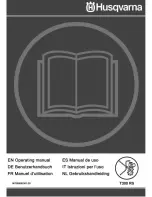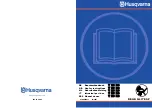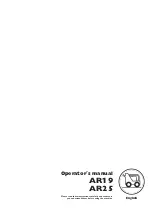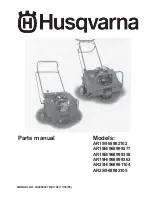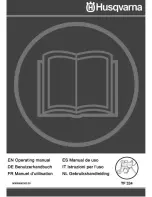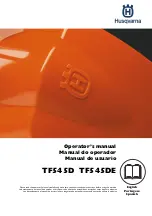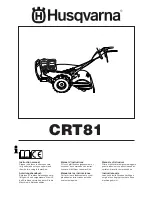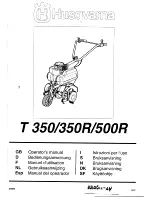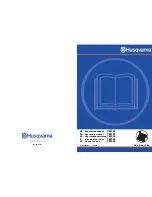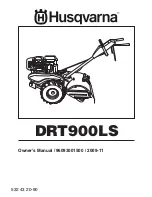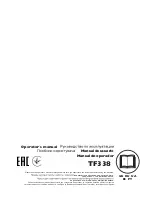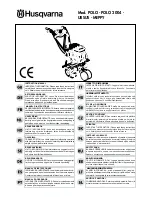
ELECTRICAL SAFETY PRECAUTIONS
• A battery-operated tool with integral batteries or a separate battery pack must be recharged only
with the specified charger for the battery. A charger that may be suitable for one type of battery
may create a risk or fire when used with another battery.
• Use a battery-operated tool only with specific battery pack. Use of any other batteries may create a
risk of fire.
• When the battery is not installed in the unit, keep it away from paper clips, coins, keys, nails,
screws or other metal objects that could make a connection from one terminal to another. Shorting
the battery terminals together may cause sparks, burns or a fire.
Battery Pack and Charger Safety
•
DO NOT
probe the charger with conductive material. There is a risk of electric shock.
•
DO NOT
insert battery into the charger if the battery pack is cracked or damaged.
•
DO NOT
charge any batteries except the ones specified by the charger.
•
DO NOT
try to use the charger for any other purposes than what is presented in the operator’s manual.
•
DO NOT
charge batteries in the rain or in wet conditions. Keep the charger in a cool and dry area.
• Keep the charger away from all liquid.
•
DO NOT
allow the battery pack or charger to overheat. If they are warm, allow them to cool down.
Recharge only at room temperature; 32 and 86˚ F (0 and 30˚ C).
•
DO NOT
cover the ventilation slots on the charger. Do not place charger on a soft surface. Keep
the ventilation slots of the charger clean and clear of dirt and debris.
•
DO NOT
allow small metal items or material such as steel wool, aluminum foil or other foreign
particles into the charger cavity.
• Handle batteries with care. Do not short the battery with conductive materials, such as rings,
bracelets, keys, etc. Doing so may damage the battery or cause personal injury.
• Unplug the charger before cleaning and when not in use.
•
DO NOT
connect two chargers together.
•
DO NOT
place the charger where the power cord might be stepped on, tripped over, or subjected
to damage.
• An extension cord should not be used unless absolutely necessary. Use of an improper extension
cord could result in a risk of fire, electric shock or electrocution.
•
DO NOT
abuse the extension cord or the power cord on the unit. Never pull or carry the unit by the
cord(s), use the cord(s) as a handle, close a door on a cord, pull the cord(s) around sharp edges or
corners or yank the cord(s) to disconnect the unit. Grasp the plug(s), not the cord(s), to disconnect
the unit.
•
DO NOT
modify the power cord, extension cord, power cord plug, extension cord plug or wall
outlet in any way.
•
DO NOT
use multiple extension cords.
• Keep the cords away from oil, water, sharp objects and heated surfaces.
• Keep the cords away from the operator’s feet to prevent tripping.
• Make sure the cords are in good condition. Inspect the power cord and extension cord periodically.
Look closely for deterioration, cuts or cracks in the insulation. If the power cord is damaged, have it
repaired by an authorized service center. If the extension cord is damaged, replace it. Do not use a
damaged cord or plug.
• If the extension cord is damaged in any manner while plugged in, disconnect the extension cord
from the receptacle.
• If the extension is to be used outside, the cord must be suitable for outdoor use. Any cord marked
for outdoor use can also be used for indoor work. The letters “W” or “WA” on the cord jacket
indicate that the cord is suitable for outdoor use.
• Make sure the extension cord is heavy enough to carry the current drawn by the unit. An
undersized cord will cause a drop in line voltage resulting in loss of power and overheating. If in
doubt, use the next heavier gauge cord. The smaller the gauge number, the heavier the cord.
• A nameplate on your unit indicates the voltage used. Never connect the unit to an AC voltage that
differs from this voltage.
• Ground Fault Circuit Interrupter (GFCI) protection should be provided on the circuit(s) or outlet(s) that will
be used with the unit. For an extra measure of safety, use receptacles with built-in GFCI protection.
SAFETY INFORMATION
2
• SAFETY AND INTERNATIONAL SYMBOLS •
This operator's manual describes safety and international symbols and pictographs that may appear
on this product. Read the operator's manual for complete safety, assembly, operating, maintenance
and repair information.
• SAFETY ALERT SYMBOL
Indicates danger, warning or caution. May be used in conjunction with other symbols
or pictographs.
• READ OPERATOR'S MANUAL
WARNING:
Read the operator’s manual(s) and follow all warnings and
safety instructions. Failure to do so can result in serious injury to the operator and/or
bystanders.
• KEEP BYSTANDERS AWAY
WARNING:
Keep all bystanders, especially children and pets, at least 50
feet (15 m) from the operating area. If anyone enters the work area, stop the unit!
SYMBOL
MEANING
• DO NOT USE IN THE RAIN
WARNING:
Avoid dangerous environments. Never operate your unit in
the rain, or in damp or wet conditions. Moisture is a shock hazard.
SAVE THESE INSTRUCTIONS
• GARDEN CULTIVATORS – ROTATING TINES CAN CAUSE SEVERE INJURY
WARNING:
Stop the motor, unplug the extension cord, and allow the
tines to stop before removing tines, or before cleaning or performing any maintenance.
Keep hands and feet away from rotating tines.
SAFETY INFORMATION
MINIMUM WIRE SIZE FOR EXTENSION CORDS
FOR 120 VOLT APPLIANCES USING 0-6 AMPS
CORD LENGTH (FEET)
25
WIRE SIZE (AWG)
18
WARNING:
If battery fluid gets in the eyes, flush immediately with clean
water for at least 15 minutes. Get immediate medical attention. Do not charge the battery
pack in the rain or in wet conditions. Do not immerse the unit, battery pack, or charger in
water or other liquid.
WARNING:
The battery pack may develop a small leak under extreme usage
or temperature conditions. If the outer seal is broken and the leakage gets on skin:
- Use soap and water to wash the area immediately.
- Neutralize with lemon juice, vinegar or other mild acid.
And seek medical attention immediately.
MAINTENANCE AND STORAGE SAFETY
•
DO NOT
perform maintenance procedures other than those described in this manual. Do not
attempt to repair; there are no user serviceable parts inside.
• If the unit is not working as it should, has been dropped, damaged, left outdoors or dropped into
water, do not use the unit.
• All service, other than the maintenance procedures described in this manual, should be performed
by an authorized service center.
• Follow all maintenance instructions in this manual.
• Before inspecting, servicing, cleaning, storing, transporting or replacing any parts on the unit:
1. Stop the motor.
2. Make sure all moving parts have stopped.
3. Allow the unit to cool.
4. Remove the battery.
• Never remove, modify or make inoperative any safety device furnished with the unit.
• Frequently inspect the unit for damage. Before further use, any damaged part should be carefully
checked to determine that it will operate properly and perform its intended function. Check for
alignment of moving parts, binding of moving parts, breakage of parts, fuel leaks and any other
conditions that may affect its operation. Damaged parts should be properly repaired or replaced by
an authorized service center, unless otherwise indicated in this manual.
• If the unit starts to vibrate abnormally, stop the motor, remove the battery and allow the unit to cool.
Then inspect the unit for the cause of the vibration. Vibration is generally an indicator of trouble.
• Use only original manufacturer replacement parts and accessories, which are designed specifically
to enhance the performance and maximize the safe operation of the product. Failure to do so may
cause poor performance and possible injury.
• Remove the battery from the unit when not in use.
• Be sure to secure the unit while transporting.
• When not in use, store the unit indoors in a locked-up and dry, or high and dry, place to prevent
unauthorized use or damage. Keep out of the reach of children.
• Keep the handles dry, clean and free from debris, oil and grease. Clean the unit after each use. Never
douse or spray the unit with water or any other liquid. Do not wash the unit with a hose; avoid getting
water in the motor and electrical connections. Do not use solvents or strong detergents.
• To reduce the risk of electric shock, avoid body contact with grounded conductors, such as metal
pipes or wire fences.
• Always stop the motor when operation is delayed, before setting down the unit or when walking
from one location to another. Make sure the unit comes to a complete stop.
• To avoid accidental starting, never carry the unit with fingers on the throttle control. Always carry
the unit by the handles with the battery removed.
• Always make sure the throttle control is disengaged before installing or removing the battery.
• If the unit strikes or becomes entangled with a foreign object, stop the motor immediately, remove
the battery and check for damage. Do not restart or operate the unit before repairing damage.
• This unit is intended for infrequent use by homeowners. It is not intended for prolonged use.
Summary of Contents for TBC57
Page 6: ...6 NOTES ...
Page 7: ...7 NOTES ...
Page 8: ...8 NOTES ...
Page 14: ...14 NOTAS ...
Page 15: ...15 NOTAS ...



















